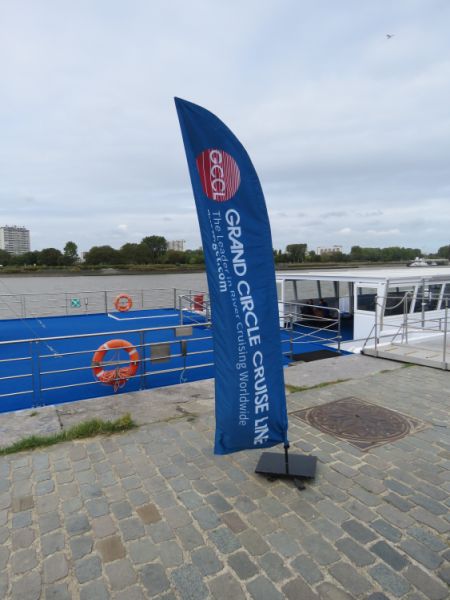

This is the tenth trip which Janice and I have taken together with Grand Cicle Travel. We have to give them another superior rating overall for the trip. It is not possible to cover everything we did in detail, as even Janice and I did some different activities on different days. We can only give you a small taste of what was especially interesting to us. The Rhine and Mosel are perhaps the most traveled rivers in the world. The whole system of rivers in Europe has been well organized by the controling organizations. They have done everything they could to make the rivers very useful, by constructing canals and multiple lock systems. Over the centuries, these two rivers, in particular, have provided many uses for a great number of people. This year, because of the low water level in one stretch, we had to switch to another boat after being bussed around the unnavigable stretch. At the same time, the passengers from a second boat were bussed to ours. This made it difficult for all involved, but especially for the crews of the two boats. However, the switch made it possible for both groups of travelers to complete their trips. That was an experience which few of us anticipated.
A small group of my Banqiao Junior High classmates, four totally, plus some other family members for a total of 11 people, took the trip together. We used two good-sized tables for all our meals, which made us the largest "group" on the boat. I am writing this travel summary without any participation from the other members of our group. Where there are some missing events, it is perhaps because I may have gone off to do what I like to do, such as walking some place of interest or climbing a hill by myself.
When we arrived in Antwerp, Belgium, the boat (the M/S Rhapsody) was waiting for us. The low water was already obvious as the the top of the boat was used to provide access from the shore. You can just see the top of the boat in this picture!

 Some of our group on board after we arrived
Some of our group on board after we arrived
We did take a tour in Antwerp and tasted some great chocolates, which were made in the shape of human hands. These are in memory of the Africans, used as slaves by the Belgians, who had their hands chopped off for any act deemed unacceptable to their masters.
We later had some pictures taken of the Banqiao 'four' and of our whole group in the Rubens Plaza.

 Whole group!
Whole group!
The next day, in the Netherlands, we had a very good bus tour to see the Delta Works (an enormous project created to protect the lowlands from flooding), before sailing to Kinderdijk to visit the UNESCO site highlighting 19 windmills. It certainly was a busy day as both projects were very interesting and informative, and are very significant representations of what is great about this small country. The pictures below do not need much explanation. I visited the UNESCO site using a bicycle as transpotation, I was the only one in our group who tried this!




The town we visited in the Netherlands was Nijmegen, a nice small place. It is typical for this trip in the sense that its Jewich quarters suffered greatly during the second world war! Another typical thing is that that they have both fresh and cooked sea food for sale:



I got a wonderful shot from the boat along one strech of the Rhine. It turned out to be the best shot of an "entire" rainbow which I have ever been able to take through a boat window!

I do not remember why we docked our boat, the M/S Rhapsody, at the town Remagen, near Bonn, along the Rhine. We were then bussed back into the city which was the Capital of West Germany after the 2nd World War and before Germany was reunited. It is where Beethoven was born and grew up! It is a very nice city, but we witnessed an accident on the street. Janice and I visited the building where Beethoven was born. It is now a museun.
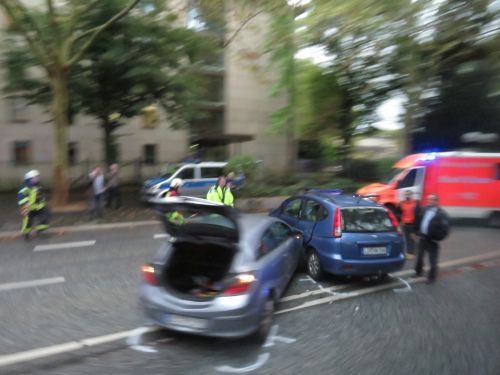




Remagen is a small town which was very involved in World War II. The US army tried to cross the river here but failed, which may be the reason we stopped here. We attended a very moving lecture by a woman who was born here during that time. The remains of the old bridge can still be seen by walking a short distance along the river:

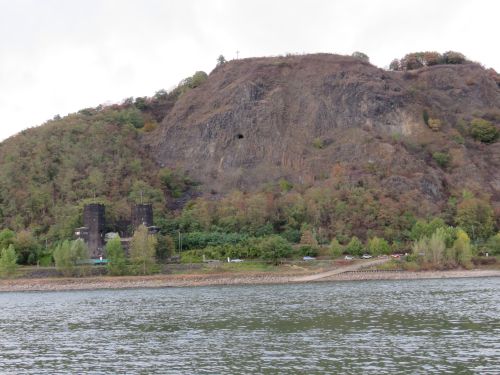
Every night after dinner, there was some kind of program - often provided by those aboard - for a short hour of fun. While we were at this small town, Janice participated in a play with other travelers and program directors. Each participant was assigned a role to play. Janice was "a scary robber". The following pictures can give you a taste of the fun which resulted:


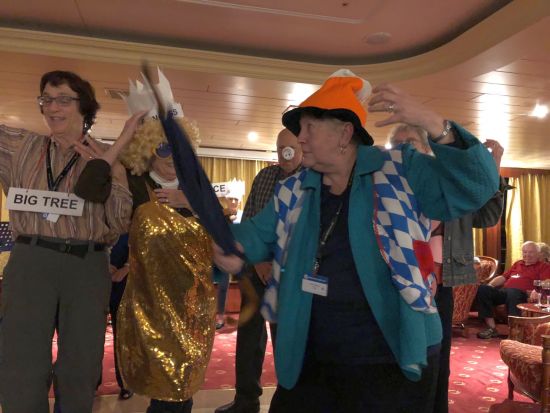

We soon left the Rhine River and entered the Mosel. The Cochem Imperial Castle was first built 1000 years ago, along the side of the river. It has been restored many times, most recently by a Berlin entrepreneur, Lois Ravene.
This is a river of Wine and Vineyards, as well as castles. We got a full taste of the region! The wine produced is primarily Riesling, by order of a local bishop a few centuries ago! The scenery is magnificent. Notice how the vinyards climb up the sides of the hills, which are made of slate. The slate rises in vertical positions which anchors the vines, preventing them from being harmed by mudslides, etc. It also provides good nutrition for the grapes! 


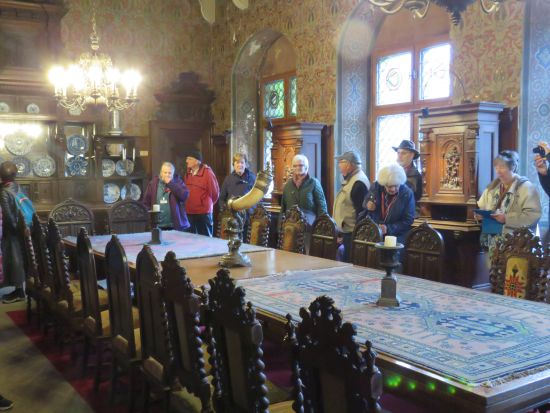
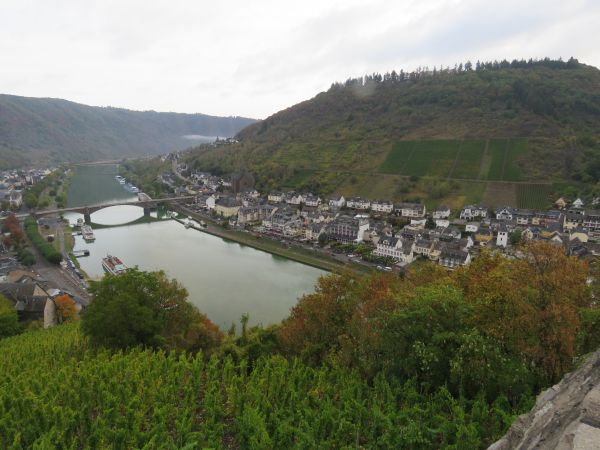


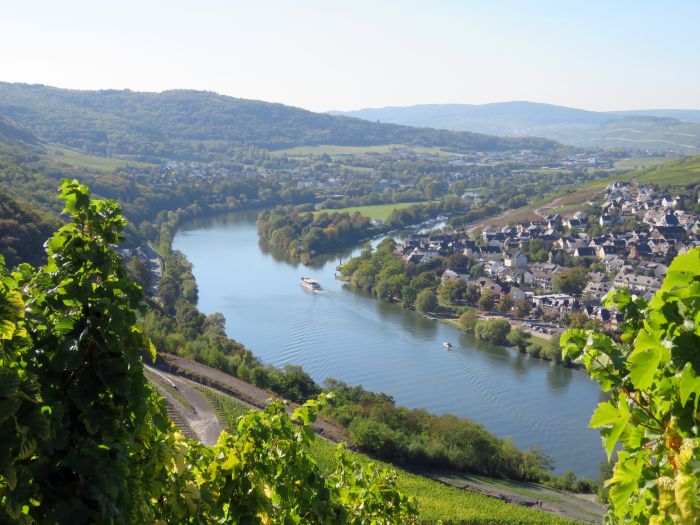






Trier may be the oldest city in Germany. It was founded by the Celts in 400 BC, then conquered by Romans. The structures they built are still visible today:
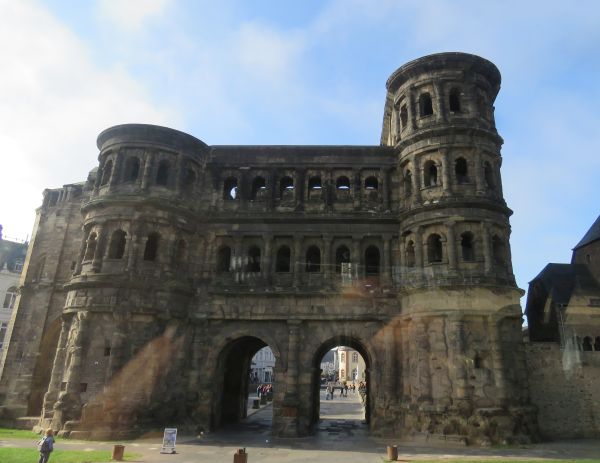
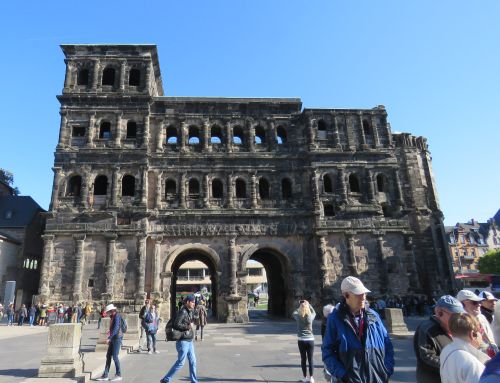
China gave the city a new statue of Kark Marx who was born here. They placed it off the main street so as not to highlight it, because of the Communist implications!


 Trier's town center!
Trier's town center!
Janice took the optional tour to Luxembourg one morning, while the rest of us had a relaxing day sailing to Bernkastel.
Click here for the next part of the trip!
This Web Page was Built with PageBreeze Free HTML Editor